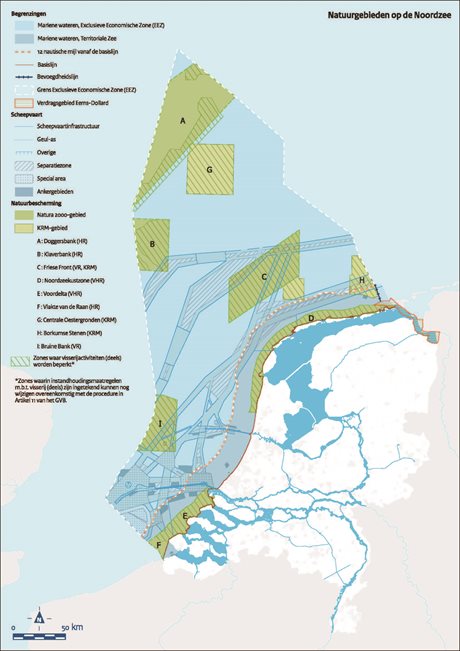Nature
Nature protection in the North Sea consists of area protection and species protection. To achieve the objectives of this protection, conservation measures are taken.
Area protection
In addition to general environmental policy (such as water quality policy), the policy for protecting species and habitats in the North Sea is mainly achieved in the context of Natura 2000, the Marine Strategy Framework Directive (MSFD) and the application of the Nature Conservation Act. The protection measures of Natura 2000 and the MSFD consist of area-specific (restoration) measures and legal use restrictions.
The area protection is based on three (European) protection frameworks:
Habitats Directive
The Habitats Directive aims to contribute to ensuring biological diversity by conserving natural habitats and wild flora and fauna on the European territory of the Member States. The measures taken under the Directive are intended to maintain or restore natural habitats and species of wild fauna and flora of Community interest at a favorable conservation status. In the North Sea, the following areas have been designated as Natura 2000 areas on the basis of the Habitats Directive:
Birds Directive
The Birds Directive concerns the conservation of all naturally wild bird species within the European territory of the Member States and contains provisions regarding the protection of bird species and their habitats. In the North Sea, the following areas have been designated as Natura 2000 areas on the basis of the Birds Directive:
The North Sea coastal zone and the Voordelta have been designated as Natura 2000 areas on the basis of both the Birds Directive and the Habitats Directive.
MSFD areas
The elaboration of the MSFD includes measures that contribute to maintaining or obtaining good environmental status. Article 13(4) indicates that Member States must take spatial protection measures that contribute to coherent and representative networks of marine protected areas, where the diversity of the constituent ecosystems is adequately covered and can create a network of protected areas. These measures are included in the program of measures.
The measures for MSFD protected areas are laid down in the Marine Strategy part 3, the Program of Measures. Whether and which measures need to be taken depends on the objectives of the area and the environmental goals included in Marine Strategy part 1.
The protected MSFD areas are:
- Friese Front
- Centrale Oestergronden
- Borkumse Stenen
In addition to area protection, there is also species protection. This means that a species in the entire Dutch North Sea is protected with certain measures. There are currently species protection plans for porpoises and sharks.
Share this
Nature reserves on the North Sea
